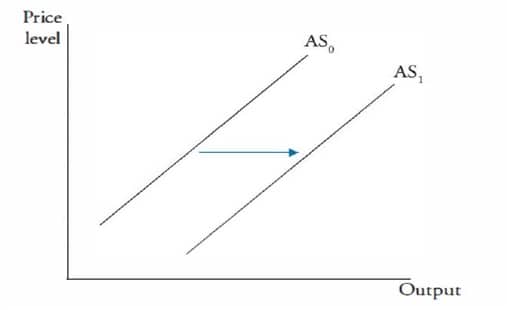RBI issues draft norms to implement Basel III Capital Framework for AIFIs- The New Indian Express
- Uncategorized
- 6 de janeiro de 2023


However, as per RBI norms, Indian scheduled commercial banks are required to maintain a CAR of 9%, and Indian public sector banks are required to maintain a CAR of 12%. The capital requirements are governed by international banking regulations set under Basel norms. Members of the Committee, backed by the G10 Governors, agreed to prevent the erosion of capital standards in their banking systems and strive toward greater convergence in capital adequacy measurement. As a result, there was general agreement on a weighted approach to risk measurement, both on and off the balance sheets of banks and the Basel Capital Accord was introduced in July 1988.
In most, if not all countries, such regulations also reference the Basel committee recommendations, Basel 1, Basel 2 or most recently Basel 3. Consolidating previously off-balance sheet items into capital ratios, so the whole of a bank’s business is taken into account, not just parts of it. The deposits in the bank accounts is a liability for the bank, as they owe it to their depositors. These deposits are also called Core Deposits of the bank as they form a stable source of funds for lending.
What is Tier 1 Tier 2 and Tier 3 capital in banks?
23 Tier 1 capital is the primary funding source of the bank. Tier 1 capital consists of shareholders' equity and retained earnings. Tier 2 capital includes revaluation reserves, hybrid capital instruments and subordinated term debt, general loan-loss reserves, and undisclosed reserves.
Further, when it’s financial position improves, it is not obligated to pay unpaid interest from previous periods. As far as the perpetual debt is concerned, even the repayment of principal is not guaranteed. It aimed to reduce their size and limited the scope of activities. The spotlight shifted to lowering risk rather than increasing profitability. In the original version, letters of credit were weighted 100% regardless of collateralisation. One of the major factors that banks consider when pricing their services is the amount of capital that different services require.
The introduction of Basel III guidelines happened because of the 2008 financial crisis that highlighted some serious flaws in the regulation and compliance mechanisms that were put in a place for the banks. Its objective was to make a resilient and transparent banking system, improve banking sector shock-absorbing capacity and more focus on Capital Adequacy Ratio. The risk-weighted asset is the bank’s assets weighted according to risks. If a bank experiences significant losses, Tier 1 capital provides a cushion that can allow it to weather stress and maintain a continuity of operations. The RBI is likely to keep a close eye on Dhanlaxmi Bank and may even intervene if the delay of the rights issue threatens the bank’s ability to meet the capital adequacy norms. But, the rights issue has been delayed by the ongoing court battle with minority shareholders and the bank’s non-compliance with rules regarding the composition and strength of the management board.
The minimum tier-1 capital ratio and the minimum tier-2 capital ratio have to be maintained at 10.5 % and 2 % of risk-weighted assets respectively. In simple terms, it measures the financial tier 3 capital health of a bank. It is the ratio of capital to assets (i.e. loans and investments). Tier 1 Capital is further split into common equity capital and additional tier 1 Capital .
Further About Tier 2 Capital
In case the bank is unable to bring the CAR above the stipulated norms then, the central bank can restrict the bank from any further lending and take control of the management. In the year 2017, the RBI in India had put Central Bank of India, IDBI Bank, Indian Overseas Bank, and Uco Bank under Prompt Corrective Action as their CAR fell below the stipulated norms. In summary, approximately only 80% of the total deposits are available with banks for lending. The ratio of total loans lent by a bank to total deposits is called Loan-to-Deposit Ratio .
What is Basel 3 capital requirements?
The Basel III accord increased the minimum Basel III capital requirements for banks from 2% in Basel II to 4.5% of common equity, as a percentage of the bank's risk-weighted assets. There is also an extra 2.5% buffer capital requirement that brings the total minimum requirement to 7% in order to be Basel compliant.
Basel III-compliant bonds are debt instruments in the nature of debentures. One may very easily get absorbed in the lives of others as one scrolls through a Facebook news … The three pillars of Basel III norms were Enhanced Minimum Capital Requirements, Enhanced Supervisory Review Process and Enhanced Disclosure & Market Discipline. This requirement increased the bank’s disclosure and compliance requirements.
Investment
Credit risk is a possibility of loss due to the borrower’s failure to repay a loan or meet contractual obligations. The users should exercise due caution and/or seek independent advice before they make any decision or take any action on the basis of such information or other contents. CAs, experts and businesses can get GST ready with ClearTax GST software & certification course. Our GST Software helps CAs, tax experts & business to manage returns & invoices in an easy manner. Our Goods & Services Tax course includes tutorial videos, guides and expert assistance to help you in mastering Goods and Services Tax. ClearTax can also help you in getting your business registered for Goods & Services Tax Law.
Banks pay interest on the deposits to their Savings Account Holders and Term Deposit Holders. In turn, the bank uses depositors’ money to give loans to borrowers at a higher rate of interest and generate interest income. However, as a matter of prudence, the central bank prohibits the bank to use the entire depositors’ money for lending.
- This is a broad definition of risk-absorbing money that a bank may hold on top of its tier 1 capital to provide further protections for depositors’ money.
- They were taking more risks than they should supported by less shareholders’ capital than might be prudent.
- The Basel Committee has issued three sets of regulations which are known as Basel-I, II, and III.
- Bank regulations cover many things – but one of the main requirements is that banks put up “capital” to absorb the credit and other risks that they take.
Interest/ dividends and even principal repayment are not guaranteed. Ultimately, the intent is to create a more resilient banking system by reducing and addressing potential financial or economic risks. While the earlier norms addressed legitimate risks, gaps became apparent during the 2007 financial crisis.
RBI’s Supervision over a Bank
RWAs is used to determine the amount of capital to be kept as a reserve to reduce the risk of insolvency. Basel III seeks to strengthen the resilience of individual banks to reduce the risk of system-wide shocks and prevent future economic meltdowns. Basel III is a set of international banking reforms and the third of the Basel Accords. Co-operative banks with deposits over ₹1,000 crore and up to ₹10,000 crore have been categorised as tier-3. UCBs with deposits more than ₹10,000 crore form the fourth tier. I am the author of “Accounting for Derivatives” and “Handbook of Corporate Equity Derivatives and Equity Capital Markets”.

CAR helps ensure that banks have sufficient capital to absorb a reasonable amount of losses and safeguard depositors’ money. It is decided by central banks and bank regulators to prevent commercial banks from taking excess leverage and becoming insolvent in the process. The Basel III norms stipulated a capital to risk weighted assets of 8%. However, as per RBI norms, Indian scheduled commercial banks are required to maintain a CAR of 9%. Stricter requirements for the quality and quantity of regulatory capital, in particular reinforcing the central role of common equity.
Project Finance & Structuring SBU
Newindianexpress.com reserves the right to take any or all comments down at any time. Although the RBI had proposed the CCCB for Indian banks in 2015 as part of its Basel-III requirements, it hasn’t actually required the CCCB to be maintained, keeping the ratio at zero percent ever since. It occurs when a large number of customers of a bank or other financial institution withdraw their deposits simultaneously over concerns of the bank’s solvency. As more people withdraw their funds, the probability of default increases, prompting more people to withdraw their deposits. This extension would impact the perception of Indian Banks and central banks in the eyes of the global players.

While a lower capital adequacy rate will allow banks to lend more, it would also expose them to higher risks. Conversely, while a high capital adequacy rate will curb a bank’s capacity to lend, it will help them maintain fiscal health. It stands at 6% for Tier 1 capital and the balance 2% for Tier 2 capital. Usually, a bank’s capital ratio is calculated by dividing its capital by its total risk-based assets. An additional layer of common equity – the capital conservation buffer – that, when breached, restricts payouts to help meet the minimum common equity requirement. Banks are required to maintain a capital conservation buffer of 2.5%.
To Read the full Story, Subscribe to ET Prime
This revised framework is referred to as the Basel II accord. The need for such a revised framework arises primarily due to the financial innovation that had occurred in the past few years. Finance minister Nirmala Sitharaman asked state-run banks to review their business models closely to identify stress points, urging them to remain vigilant amid a deepening banking crisis in the US and Europe. The Basel Framework are capital regulations developed by the Basel Committee on Banking Supervision in response to the deficiencies in financial regulation revealed by the financial crisis of 2007–08. Credit risk is the possibility of a loss resulting from a borrower’s failure to repay a loan or meet contractual obligations.
In addition, he has cleared the FRM certification exam from GARP . Niranjan has an avid interest for financial markets and has been following equity markets since his school days. Niranjan has been involved with strategy at ithought for over seven years now. Harshil is a Business Administration Graduate from Loyola College, Chennai. Harshil has an avid interest for financial markets and hunts for new opportunities. Having developed interest in the financial markets at an early age, he utilises his knowledge to develop sound investment strategies.
What is in Tier 2 capital?
Under the generally applicable rule, tier 2 capital includes the allowance for loan and lease losses (ALLL)3 up to 1.25 percent of risk-weighted assets, qualifying preferred stock, subordinated debt, and qualifying tier 2 minority interests, less any deductions in the tier 2 instruments of an unconsolidated financial …
The additional capital could help in raising the bank’s CRAR which serve as a buffer absorbing any losses incurred by the bank on its loan book in the case of any crisis in the future. The CRAR is a ratio that compares the value of a bank’s capital against the value of its various assets weighted according to how risky each asset is. ‘Risk’ was modified to include market and operational risks. Minimal capital requirements for lending transactions was specified as 8% of RWAs. This ratio is high, especially given the low risk of letters of credit. By way of comparison, asset-based lending usually offer higher returns and are always weighted 20%.
What is in Tier 1 capital?
Tier 1 capital represents the core equity assets of a bank or financial institution. It is largely composed of disclosed reserves (also known as retained earnings) and common stock. It can also include noncumulative, nonredeemable preferred stock.
